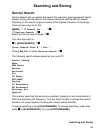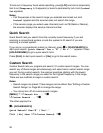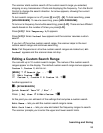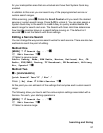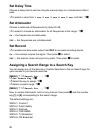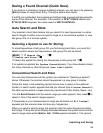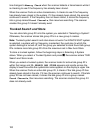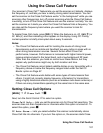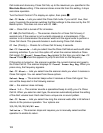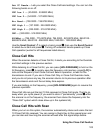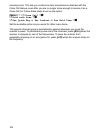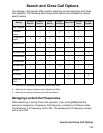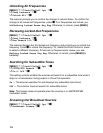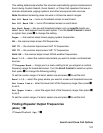100
line changes to Memory Check when the scanner detects a transmission while it
is checking to see if the frequency has already been stored.
When the scanner finds an active transmission, it checks to see if the frequency
has already been stored in the system. If it has already been stored, the scanner
continues to search. If the frequency has not been stored, it stores the frequency
into a group named Found Channels, then resumes searching. The scanner
creates this group if it doesn’t already exist.
Trunked Search and Store
You can store talk group ID’s into the system you selected in “Selecting a System”.
Otherwise, the scanner stores talk group ID’s in a new group it creates.
Note: Trunked system search and store does not work if an EDACS SCAT system
is selected, a system with no frequency is selected, the quick key to which the
system belongs is turned off, and the group you selected to store found talk group
ID’s contains more talk group ID’s than the maximum set in Max Auto Store.
To store a trunked system, follow the beginning steps in Selecting A System
above. When you select a Trunked System and press
F, the scanner enters TGID
Search and Store mode.
When you select a trunked system, the scanner looks for active talk group ID’s
within that range and ID SEARCH AND STORE appears and scrolls across the
display’s lower line while the system/site name appears on the display’s upper line.
When the scanner finds an active talk group ID, it checks if the talk group ID has
already been stored in the site. If it has, the scanner continues to search. If the talk
group ID has not been stored, it stores the talk group ID into a group named
Found Channels, then resumes searching. The scanner creates this group if it
does not already exist.




